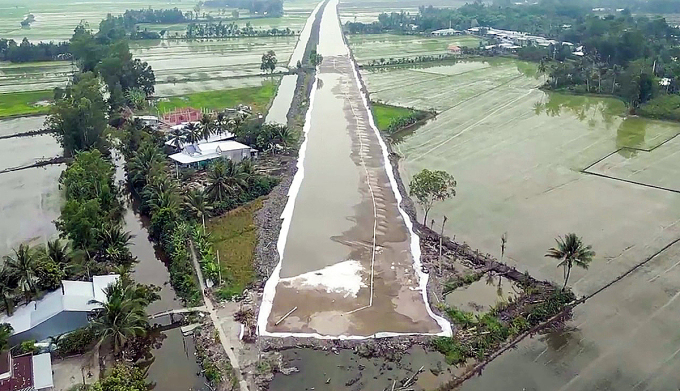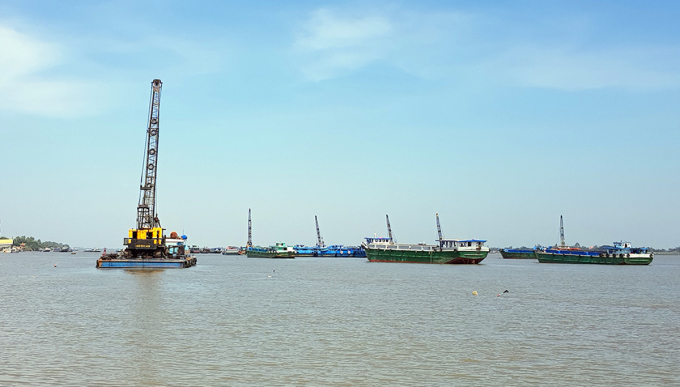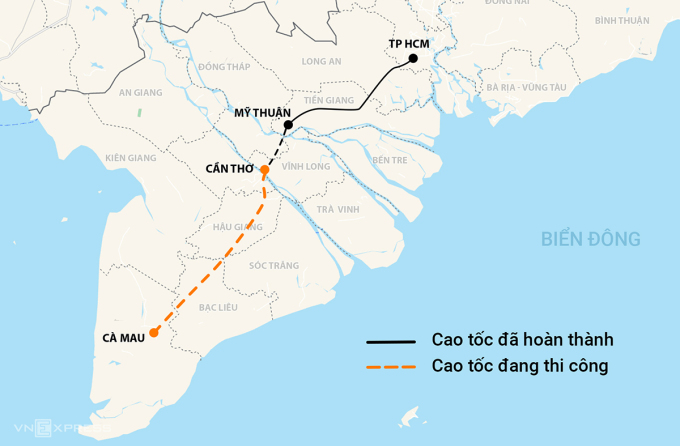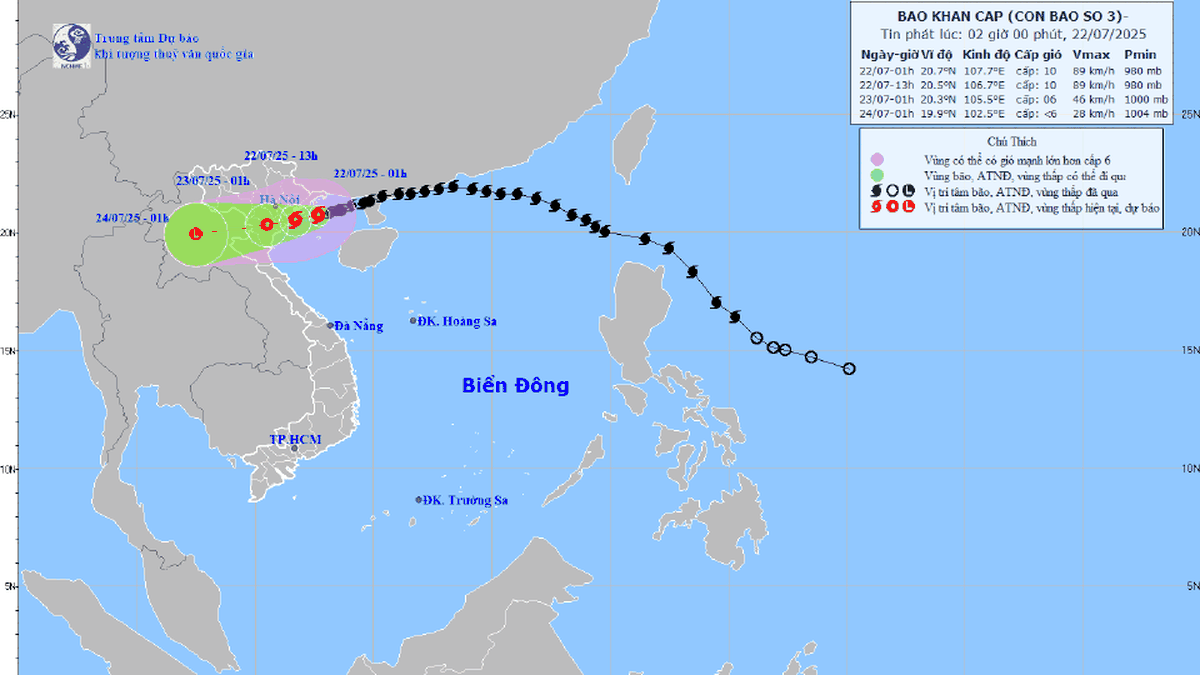Despite difficulties, the three provinces of Dong Thap, An Giang and Vinh Long are trying to balance sand resources for the Can Tho - Ca Mau expressway to meet the 35% schedule in 2023.
The move was urgently implemented by the provinces after Deputy Prime Minister Tran Hong Ha requested to prioritize sand allocation for the key highway in the West. Vinh Long was asked to allocate about 5 million cubic meters of sand, while Dong Thap and An Giang provinces each provided about 7 million cubic meters for the construction of the highway. In the immediate future, the three provinces with the largest sand reserves in the West will provide 9.1 million cubic meters of sand to ensure the progress of the route this year.
According to the My Thuan Management Board (project investor), the lack of sand for embankment is the main reason for the project delay. By mid-May, the progress of the two component projects of the Can Tho - Hau Giang route was 2.5% (3.3% behind schedule), and the Hau Giang - Ca Mau route was 2.9% (1.5% behind schedule).

The Can Tho - Ca Mau expressway section passing through Luong Nghia commune, Long My district, Hau Giang province, has been paved by the contractor waiting for sand to be added, on May 22. Photo: An Binh
Working with Dong Thap province on June 2, Deputy Minister of Transport Nguyen Duy Lam said that the ministry is very anxious about the lack of sand for the Can Tho - Ca Mau expressway. Currently, many sections of the project have had their organic layers removed and geotextiles laid, but due to the lack of sand for the foundation, many stages have been stalled.
According to the leaders of the Ministry of Transport, the National Assembly and the Government have issued a special mechanism to reduce some steps so that sand mines can be put into operation soon. However, with the procedures drafted by Dong Thap province, to carry out sand mining, the authorities will need about 100 days, which means more than three months to have materials.
Faced with the locality’s confusion in implementing procedures to put sand mines into operation, Deputy Minister of Natural Resources and Environment Tran Quy Kien suggested that the province follow Resolution 133 of the Government on applying a special mechanism in licensing the exploitation of minerals for common construction materials. This is to increase the capacity of the mines in operation by 50%, meeting the progress of the North-South expressway project in the West.
For mines that have been suspended or expired, the locality will review and classify them to assign them to the project contractor or re-license the old unit to exploit the remaining reserves on the condition that they must be provided for key transport projects. For new mines, the locality will carry out procedures to confirm the registration dossier for exploitation volume according to the guidance of the Ministry of Natural Resources and Environment.
According to Vice Chairman of Dong Thap Provincial People's Committee Huynh Minh Tuan, the locality currently has 14 sand mining licenses extended until June 30 with a reserve of about 25 million m3. Recently, the province increased the capacity of mines 2A and 2B by 50% and introduced two new mines on Tien River (Chau Thanh District) and Hau River (Lai Vung District), with a total reserve of 1.9 million m3, for the Can Tho - Ca Mau expressway. For the remaining 5.1 million m3 of sand, the locality is reviewing a number of mines to find a supply source.

Sand mining on Tien River, in An Giang. Photo: An Phu
An Giang province currently has 10 companies and enterprises licensed to exploit sand in 15 mining areas with an area of nearly 950 hectares, a capacity of more than 9.6 million m3 per year, and a total reserve of more than 36 million m3. In addition, the locality has three dredging projects to clear channels and regulate flows with mineral recovery with more than 4.3 million m3 of sand.
Director of the Department of Natural Resources and Environment of An Giang Nguyen Viet Tri said that in addition to the 7 million cubic meters of sand that the Government has allocated for the Can Tho - Ca Mau expressway, the locality must also supply more than 27 million cubic meters of sand for other projects. Specifically, the Chau Doc - Can Tho - Soc Trang expressway needs 9 million cubic meters of sand, the route connecting National Highway 91 and the Long Xuyen City bypass needs 1.4 million cubic meters, National Highway 91C, the N1 Tan Chau - Chau Doc route needs 2 million cubic meters. 11 provincial roads, rural traffic systems, and local projects that are being invested in need about 14 million cubic meters of sand.
Chairman of the An Giang People's Committee Nguyen Thanh Binh said that despite the difficulties, the locality is trying to balance and ensure the supply for the Can Tho - Ca Mau expressway. "All licensing activities, exploitation organization, supervision... must comply with legal regulations and ensure safety for the people," said the head of the An Giang provincial government.
Meanwhile, Director of the Department of Natural Resources and Environment of Vinh Long Nguyen Van Hieu said the province is urgently coordinating with relevant units to support contractors and businesses to complete procedures to soon exploit sand resources (already planned) to serve the filling of the expressway.

Route of Can Tho - Ca Mau expressway. Graphics: Manh Cuong
According to the Department of Construction Investment Management (Ministry of Transport), in the West, in addition to the sand mines currently being exploited, the total reserves of the mines in the planning are more than 215 million m3. Of this, An Giang province has over 54 million m3; Dong Thap nearly 34 million m3, Vinh Long more than 42 million m3...
The Can Tho - Ca Mau Expressway started construction on January 1 and is expected to be completed in 2026. When operational, the project will connect many provinces and cities in the Mekong Delta. In phase one, the project has a total investment of more than VND27,200 billion, is 17 m wide, has 4 lanes, and is divided into two component projects: Can Tho - Hau Giang, 36.7 km long, with an investment of VND9,700 billion; the Hau Giang - Ca Mau section is 72.8 km long, with an investment of nearly VND17,500 billion.
An Binh
Source link
























![[Photo] National Assembly Chairman Tran Thanh Man visits Vietnamese Heroic Mother Ta Thi Tran](https://vphoto.vietnam.vn/thumb/1200x675/vietnam/resource/IMAGE/2025/7/20/765c0bd057dd44ad83ab89fe0255b783)













































































Comment (0)